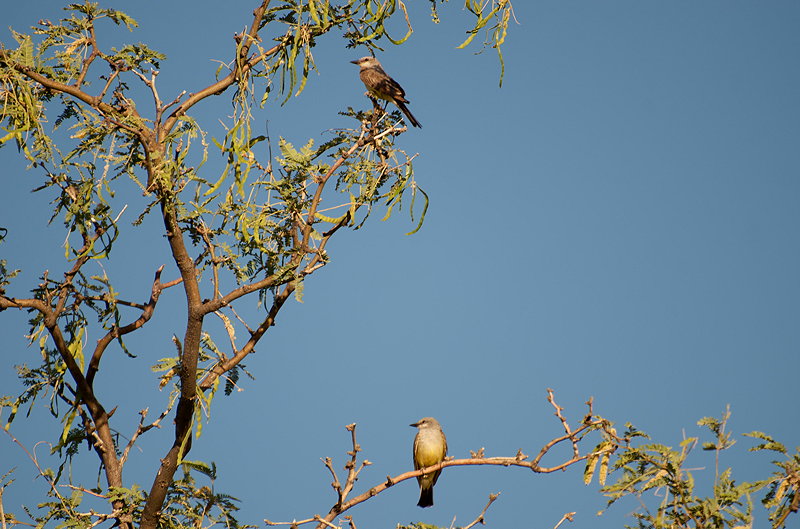
Many Critter Visitors, Moon Flyover Video, Barnard's Star,
Saturn Hexagon Cloud?
Posted: 18 June 2013
The observatory was opened Monday, 17 June 2013, at 1831 MST, 106°F. The sky was clear and there were no breezes this evening. As I was opening the observatory door, had these visitors in the tree to the southeast:

At 1840 MST, I began observing with the 8" LX200-ACF, first Venus, then Mercury, at 83X. Switched to 222X and continued to observe Mercury. Its crescent phase looked nice, however, seeing was not very good. While observing Mercury, some more visitors stopped by:

At 1847 MST, well before sunset, I photographed the waxing gibbous moon using the 300mm telephoto lens on the D7000 DSLR:

I resumed observing Mercury but seeing was getting worse. More visitors came by:




Look closely at the last photo; there is a bunny as well as the quail chicks.
I ended Mercury observing at 1914 MST and slewed to the moon. But before I could start lunar observing, the Quail family came back:



The Quail family left and I started lunar observing, 222X. The craters Copernicus and Clavius were excellent this evening. The southern pole region also provided a nice view. Seeing was better where the moon was, high in the southern sky. At 1936 MST, I took this photograph of the moon with the D7000 DSLR, 8" prime focus, 1/400sec, ISO 400:

I then did a HD video recording "flyover" at prime focus + 3X TeleXtender, 1/60sec, ISO 1600. Here are three frames from the video. Click (or tap) any of the images to view the 56 second video (50.4 MB; be patient while the file downloads). The background music is from a "Hearts of Space" album.



I began temporary closing of the observatory at 1954 MST to avoid the prime time of Kissing Bugs. The observatory was closed at 2000 MST. I returned at 2156 MST and took a quick look at Saturn, 222X. The planet, Ring system, and shadows were an excellent view.
I then began setting up to image Barnard's Star, a high proper motion star. I had previously attempted to image it on 3 June 2013 and 10 June 2013. I mounted the D7000 DSLR at prime focus + focal reducer + visual back, and did a focus test on the star Vega using the Bahtinov Mask. I then powered on the GC Wi-Fi Adapter and used SkySafari Pro on the iPhone 4 to GOTO Barnard's Star. At 2217 MST, took this 30 second, ISO 6400, image:

But where is Barnard's Star? This screen capture from SkySafari for Mac OS X shows approximately the same scale and indicates where Barnard's Star "should be":

This animated GIF shows the 3 June and 17 June images as a "blink comparison":

Unfortunately, no star movement near where Barnard's Star should be is visible over the two week period. I will try another image in two weeks.
At 2225 MST, I resumed lunar observing, 364X. Initially, the seeing was very good. Crater Tycho was really nice; the central peaks were clearly seen. As the moon got lower in the sky, seeing got worse.
At 2235 MST, slewed to Saturn and viewed it at 364X. During brief moments of excellent seeing, I could just make out a dark cloud at Saturn's north pole. Could this be the "Hexagon Storm Cloud"? Probably. I ended Saturn viewing at 2250 MST.
The observatory was closed at 2304 MST, 75°F.
I received two satellite moon transit alerts from CalSky.com. The first would be an ISS-Moon transit on 23 June; unfortunately, the moon will be behind the hill to the east at the transit time. The second alert was for a HST-Moon transit on 25 June. The moon will be high in the sky and I hope to repeat my imaging success of the 29 April 2013 HST-Moon transit.
Comments are welcome; use the Comments section below, or you can Email Me. Thanks.
Cassiopeia Observatory Home Page